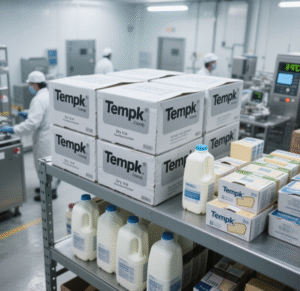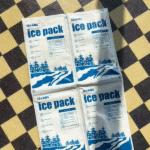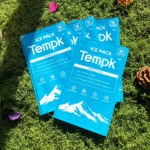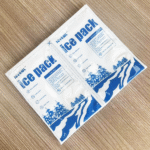Lors de l'expédition aliments sensibles à la température, Le maintien de la fraîcheur est essentiel. Glace sèche pour emballer les aliments est une solution de confiance pour s'assurer que vos articles périssables restent gelés tout au long du transit. Ce guide explique comment fonctionne la glace sèche, les meilleures pratiques pour l'utiliser, et les industries qui en bénéficient.
-
Pourquoi utiliser la glace sèche pour emballer les aliments?
-
Comment la glace sèche préserve-t-elle des aliments surgelés pendant l'expédition?
-
Meilleures pratiques et conseils de sécurité pour utiliser la glace sèche dans l'emballage alimentaire.
-
Industries qui comptent sur la glace sèche pour l'expédition de produits alimentaires.
Pourquoi utiliser la glace sèche pour emballer les aliments?
Glace sèche, une forme solide de dioxyde de carbone, est extrêmement efficace pour garder les aliments congelés. Contrairement à la glace ordinaire, qui fond et crée de l'eau, La glace sèche sublime directement dans le gaz, ne laissant aucune humidité derrière. Cela le rend idéal pour maintenir le stabilité de la température des aliments surgelés, Surtout pendant expéditions à longue distance.
Comment fonctionne la glace sèche dans l'emballage alimentaire
La glace sèche est l'option de référence pour la préservation aliments surgelés pendant le transport, car il maintient une température de -78.5°C (-109.3°F). Il est couramment utilisé pour emballer des aliments tels que viande, fruit de mer, glace, et fruits surgelés. La glace sèche fonctionne en absorbant la chaleur car elle sublime, Abaissant ainsi la température à l'intérieur de l'emballage et le gardant en dessous du gel.
Meilleures pratiques pour utiliser la glace sèche dans l'emballage alimentaire
Lorsque vous emballez des aliments avec de la glace sèche, Il est crucial de suivre les procédures appropriées pour assurer la sécurité de l'envoi et la préservation des aliments.
1. Déterminez la bonne quantité de glace sèche
La quantité de glace sèche requise dépend de facteurs comme durée d'expédition et le type de nourriture être transporté. Typiquement, Vous avez besoin autour 5 à 10 livres de glace sèche pour chaque 24 heures d'expédition. La surestimation de la quantité aide à maintenir la température pendant les retards ou les événements imprévus.
2. Utiliser des matériaux d'isolation
Pour empêcher la glace sèche de sublimer trop rapidement, Assurez-vous d'utiliser de haute qualité Matériaux d'emballage isolant. Refroidisseurs en polystyrène ou doublures thermiques sont couramment utilisés pour protéger la glace sec et le garder plus froid pendant une période plus longue. Ces matériaux aident également à garantir que votre nourriture reste à la bonne température.
3. Assurer une bonne ventilation
Depuis la glace sèche libère du dioxyde de gaz pendant la sublimation, il est essentiel de ventiler l'emballage. Les conteneurs scellés sans ventilation peuvent provoquer une accumulation de gaz, création pression à l'intérieur du paquet. Cela pourrait endommager la nourriture ou même entraîner des risques de sécurité. Utilisez toujours des conteneurs avec trous de ventilation ou vannes respiratoires.
| Méthode d'emballage | Emballage de glace sec | Packs de glace traditionnels |
|---|---|---|
| Durée de refroidissement | 24-72 heures | 12-24 heures |
| Risque d'humidité | Pas d'eau, pas de fuites | Risque de fuite |
| Contrôle de la température | Toujours en dessous du gel | Température au-dessus de la congélation |
| Idéal pour | Aliments surgelés, fruit de mer | Refroidissement à court terme |
Industries qui bénéficient de l'emballage de glace sèche
Plusieurs industries comptent sur la glace sèche pour l'emballage alimentaire, en particulier ceux impliqués dans l'expédition de aliments surgelés ou marchandises périssables. Voici quelques secteurs clés qui bénéficient de l'emballage de glace sèche:
-
Industrie alimentaire: La glace sèche est idéale pour l'expédition marchandises périssables, surtout ceux qui doivent être conservés Températures inférieures à zéro, comme les repas surgelés, glace, et les viandes.
-
Médical & Pharmaceutique: Bien qu'il ne soit pas lié à la nourriture, Ce secteur utilise également de la glace sèche pour expédier des articles sensibles à la température comme vaccins et échantillons biologiques, qui nécessitent un contrôle de température précis.
-
Industrie des fruits de mer: Produits de fruits de mer, qui sont très périssables, bénéficient souvent de la glace sèche pour maintenir la fraîcheur pendant transport long-courrier.
Pourquoi la glace sèche est préférée pour ces produits alimentaires
-
Repas surgelés & Glace: La glace sèche garantit que les aliments surgelés restent la bonne température et empêche fusion ou détérioration pendant le transit.
-
Viande et fruits de mer: Les deux nécessitent un stockage congelé pour éviter croissance bactérienne et perte de qualité. La glace sèche est efficace pour les assurer la sécurité jusqu'à ce qu'ils atteignent leur destination.
-
Fruits périssables & Légumes: Quelques fruits ou légumes délicats, surtout ceux qui ont besoin de gel, peut également bénéficier d'un emballage de glace sec pour prolonger la durée de conservation.
Considérations de sécurité pour l'utilisation de la glace sèche dans l'emballage alimentaire
Alors que la glace sèche est une solution fiable, il est livré avec des considérations de sécurité. Une bonne manipulation et un stockage sont essentiels pour assurer un processus d'expédition sécurisé.
-
Manipulation de la glace sèche: Toujours porter gants isolés Lors de la manipulation de la glace sèche pour éviter gelure. Ne le touchez jamais directement avec une peau nue.
-
Règlements d'expédition: La glace sèche est considérée comme un matières dangereuses et nécessite Étiquetage approprié Lorsqu'il est expédié par l'air. Assurer la conformité à tous les règlements d'expédition.
-
Stockage: Stocker la glace sèche zones ventilées, Loin des sources directes du soleil et de la chaleur, pour éviter une sublimation rapide.
Exemple du monde réel: Une entreprise expédiée fruits de mer gelés à un emplacement éloigné utilisé de la glace sèche pour l'emballage. La glace sèche a maintenu les produits à -20°F (-29°C) depuis plus 48 heures, s'assurer que les fruits de mer sont arrivés frais et congelés en toute sécurité.
2025 Tendances de la glace sèche pour l'emballage alimentaire
Comme la demande de fiable, Les solutions de chaîne froide durables augmentent, L'emballage de glace sec continue d'évoluer. Voici quelques-unes des dernières tendances:
-
Solutions respectueuses de l'environnement: Les entreprises se concentrent sur Production de glace sèche durable, s'assurer que le processus minimise émissions de carbone.
-
Emballage intelligent: Avec la montée de emballage intelligent, Les conteneurs de glace sec sont désormais équipés de capteurs de température ce moniteur et ajustent les niveaux de refroidissement en temps réel, Améliorer la sécurité des expéditions.
-
Automatisation dans la logistique de la chaîne du froid: Les systèmes automatisés sont utilisés pour calculer le montant optimal de glace sèche nécessaire en fonction de la climat de destination et durée de l'expédition.
Développements récents
-
Isolation innovante: Nouveau emballage thermique Les technologies étendent le Durée de la puissance de refroidissement de la glace sèche, Permettre des expéditions à plus longue distance.
-
Réduction des émissions de carbone: L'industrie de la glace sèche adopte pratiques plus vertes en utilisant du dioxyde de carbone recyclé, contribuant à la durabilité.
Questions fréquemment posées {#FAQ}
Combien de temps la glace sèche peut-elle garder les aliments congelés pendant l'expédition?
La glace sèche peut garder les aliments congelés pour 24 à 72 heures, en fonction de l'isolation et du montant utilisés.
La glace sèche est-elle sûre pour l'emballage alimentaire?
Oui, La glace sèche est sûre pour les emballages alimentaires lorsqu'il est utilisé correctement. Assurer toujours une ventilation appropriée dans l'emballage.
Puis-je stocker de la glace sèche dans ma maison?
Oui, Mais la glace sèche doit être stockée dans zones ventilées et manipulé avec prudence pour éviter gelure et accumulation de gaz.
Résumé et recommandations
La glace sèche est une solution efficace et fiable pour emballage, en particulier pour les longues expéditions nécessitant des températures de congélation cohérentes. En suivant les mesures de sécurité et les meilleures pratiques appropriées, Vous pouvez vous assurer que vos marchandises périssables arrivent à destination en toute sécurité et en parfait état.
Étapes suivantes: Envisagez d'intégrer glace sèche pour l'emballage des aliments Dans votre chaîne d'approvisionnement pour les produits qui nécessitent un contrôle de température à long terme. Contacter un Expert en logistique de la chaîne du froid Pour optimiser vos pratiques d'expédition.
À propos du tempk
À Rotation, Nous nous spécialisons dans la fourniture de solutions d'emballage de chaîne froide de haute qualité, y compris des emballages de glace sec pour l'industrie alimentaire. Nos services garantissent que vos biens périssables maintiennent une température optimale tout au long du transit.
Contactez-nous Aujourd'hui pour plus d'informations sur la façon dont nous pouvons aider à améliorer votre logistique d'expédition alimentaire avec des solutions de glace sèche.
























